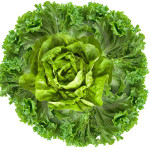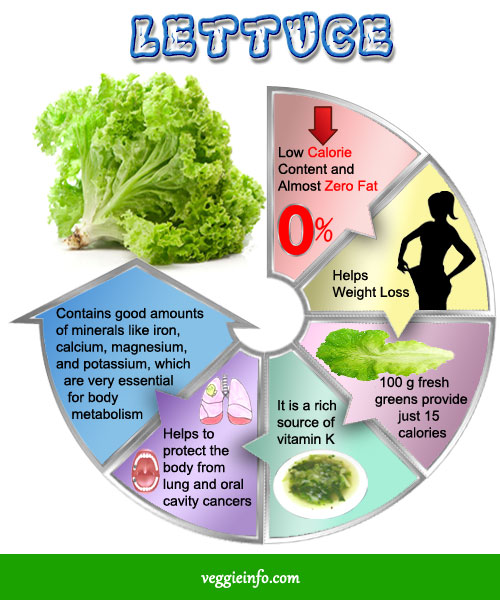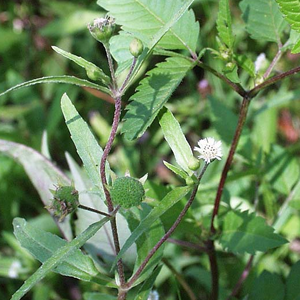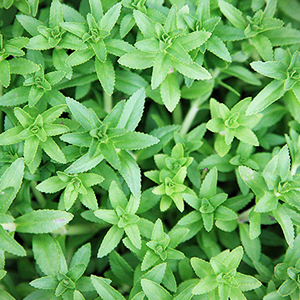
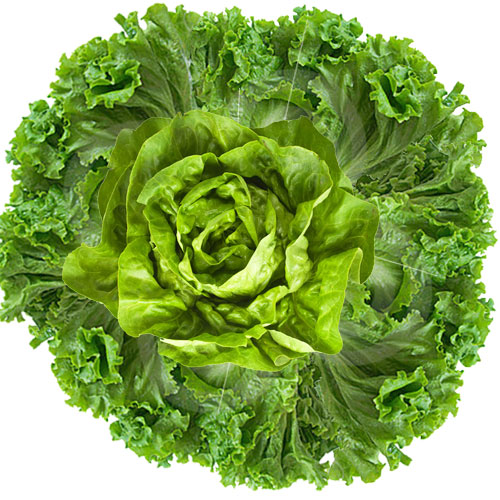
Lettuce Health Requirements and Nutrition Summary
About Lettuce
Scientifically known as Lactuca sativa; lettuce belongs to the lactua genus and Asteraceae family. This is an annual plant of the daisy family. The word lettuce originally from Middle English is actually derived from the Old French word letues. This is also known as Romaine lettuce in many parts of the world. First cultivated in ancient Egypt for extracting oil from its seeds; it was later known for its edible leaves. It was a plant held sacred to the god of reproduction known as Min; it was carried during his festivals and was also kept alongside his photos as it is believed that lettuce helps min to perform sexual activity untiringly. The major variety of lettuce is the winter friendly lettuce and very rare that they grow in warm or hot weather regions. Lettuce also faces a lot of cultivation problem; due to lack of fertility in the soil lettuce may not grow properly and mature to its right size. This leads to a malnourished and a deformed vegetable. Lettuce attracts a lot of worms and pest to itself as it is fresh leafy vegetable, apart from insects and pest it forms a part of diet for mammals and rodents such as rabbits and groundhogs that feed on them by nibbling small holes in it. Lettuce is easily prone to viral plant diseases which lead to distorted leaves, stunted plant growth and deformed heads. The cultivation of lettuce involves a lot of pesticides and other organic products to protect it from pest attacks.
Nutrition Facts
- It is a rich source of vitamin K.
- Contains good amounts of minerals like iron, calcium, magnesium, and potassium, which are VeryEssential For Body Metabolism.
- 100 g fresh greens provide just 15 calories.
- Low Calorie Content and Almost Zero Fat.
Health Benefits
- Helps Weight Loss.
- Helps to protect the body from lung and oral cavity cancers.
- Low glycemic Index.
| Principle | Nutrient Value | Percentage of RDA |
|---|---|---|
| Energy | 15 Kcal | 1 % |
| Carbohydrates | 2.79 g | 2% |
| Protein | 1.36 g | 2% |
| Total Fat | 0.15 g | 0.5% |
| Cholesterol | 0 mg | 0% |
| Dietary Fiber | 1.3 g | 3% |
| Vitamins | ||
| Folates | 38 µg | 9.5% |
| Niacin | 0.375 mg | 2% |
| Pantothenic acid | 0.134 mg | 2.5% |
| Pyridoxine | 0.090 mg | 7% |
| Riboflavin | 0.080 mg | 6 % |
| Thiamin | 0.070 mg | 6% |
| Vitamin A | 7405 IU | 247% |
| Vitamin C | 9.2 mg | 15% |
| Vitamin E-a | 0.29 mg | 2% |
| Vitamin K | 126.3 µg | 105% |
| Electrolytes | ||
| Sodium | 28 mg | 2% |
| Potassium | 194 mg | 4% |
| Minerals | ||
| Calcium | 36 mg | 3.5% |
| Copper | 0.029 mg | 3% |
| Iron | 0.86 mg | 10% |
| Magnesium | 13 mg | 3% |
| Manganese | 0.250 mg | 11% |
| Phosphorus | 29 mg | 4% |
| Zinc | 0.18 mg | 1.5% |
| Phyto-nutrients | ||
| Carotene-ß | 4443 µg | — |
| Crypto- xanthin-ß | 0 µg | — |
| Lutein- zeaxanthin | 1730 µg | — |
Lettuce is a super power food because one cup of shredded lettuce consist of only 12 calories, which is remarkably a very low calorie content , this not only helps to keep a check over the calorie consumed but it also helps to keep you full for a long time. Lettuce is rich in dietary fibre which promotes weight loss along side with the active metabolism and that leads to smooth bowel movements. Lettuce contains Vitamin C and beta carotene that is a heart friendly food;this vegetable has the ability to control the blood cholesterol and prevent clogging of arteries. Thus preventing cardiovascular problem to a large extent. Lettuce has high water content and is best consumed in summers to refuel the body of the replenished water levels.The minerals in lettuce help remove toxins and keep your acid/alkaline balance in order. Once you are balanced on this level there are a host of benefits including greater energy, clearer thinking, deep restful sleep, and youthful skin.Lettuce has an average glycemic index of 15, but because it has so few calories, its glycemic load is considered zero. Foods with low glycemic indexes are great for anyone watching their blood sugars for medical reasons, or for weight management.
How to Enjoy Lettuce
Lettuce is a common sight in every salad, the crunch and the hydration in the salad is because of lettuce. Sandwiches and subs use lettuce as a core ingredient as it not only adds flavour but also gives a
crunchy texture that gives a meal satisfaction keeping you full for a longer period. Wraps made out of lettuce leaves with filling of other vegetables and cous cous is a light tea time snack. Adding lettuce to a bowl of sautéed tofu and other vegetables dressed in vinaigrette forms a whole some meal replacement. Lettuce leaves are also used for its ornamental and garnish purpose because of their attractive appearance.
Aspects Of Lettuce
Plants generally reach a height of almost 30 cm and the colors of the leave are green and red color spectrums. There are few varieties which have yellow, gold or blue-teal leaves. Lettuce has a wide range of shapes and textures, from dense heads to the notched leaves of leaf variety. This plant is exposed to infestations by various insects and other pests and the farmers have to take care of the plant effectively during cultivation. The inflorescent flowers heads are composed of multiple florets each with a modified calyx called a pappus. The flower stalks measure up to 3 feet and the dry fruit which it bears measures 3 to 3 mm long. It is imperative to note that the fruits have 5-7 ribs on each side and are tipped with white hairs.
Production
The production will be very low when the temperature is more than 27 degree Celsius. The seeds should be sowed properly and spacing is a must. Though there are several types of lettuce, three types are commonly found in many parts of the world. They are seven main types of cultivars. They are Leaf, Romaine, Iceberg, Butterhead, Summercrisp, Stem and Oilseed. This leaves are commercially grown for seeds and leaves. Although China is the top producer of lettuce, majority of the leaves are consumed within China. The major exporter of lettuce are Spain and US.
Uses
- It is worth to note that minor amount of lettuce is used while making tobacco-free cigarettes. Lettuce grows perfectly in full sun in loose, nitrogen-rich soils.
- The farmers can reap maximum leaves if these plants are sowed in cold weathers since lettuce prefer cold climates.
- Lettuce can be easily cultivated since it requires minimum intervention and cool climate.
- The leafy foliage is used as a mixture in salad, soups, sandwiches and wraps.
- The asparagus lettuce is very famous and its stem is eaten either raw or cooked.
- Lettuce is rich in vitamins such as K and A.
- They also have moderate iron and folate.
- The lettuce was consumed as a food during 50 AD by Romanians.
- Mostly lettuce is used in soups, salads, sandwiches and wraps.
- These leaves were administered by Egyptians and Romanians as medicinal herb.
- The ancient Egyptians used these leaves for boosting their sexual power and also for improving fertilized sperms.
- The folklores prescribed these medicines for treating rheumatism, tension, pain and nervousness.
- This plant is grown by many countries all over the world and used as a food crop.
- Many countries use the leaves during festivals and important occasions.
Interesting Facts About Lettuce
In ancient days Egyptians cultivated this plant and offered the leaves during festival to the fertility god Min. Lettuce is considered an ancient plant since it appears in the book written by Hlidegard of Bingen during 1098 and 1179 on medicinal herbs. This herb not only appears in this book but also in the books written by various English authors on herbs and plants. The documentations related to 19th century also show that there were 65 and 140 distinct varieties of lettuce. So there are evidences that this particular species belong to ancient periods and were cultivated lavishly in Egypt and other European countries.

